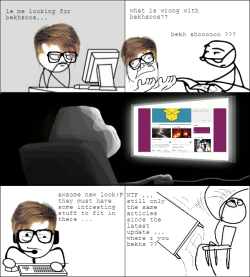Queering the Domestic Violence Law
747 viewsThis paper was presented by Rasha Moumneh, researcher in the Middle East/North Africa Division of Human Rights Watch, at a panel entitled “Discrimination And Solidarity” as part of IDAHO 2010 held on May 16th in Masrah Al Madina – Beirut.
When we talk about the politics of intersectionality and the question of solidarity with the LGBT cause (however we choose to define “the cause”, because in and of itself that is not always self-evident), in addition to the question of the LBGT movement’s solidarity with others, women are perhaps the ally that comes to mind first. Many of us have been working on linking queer liberation and women’s liberation, arguing that there cannot be one without the other because in essence both groups are working towards the dismantling of structures that regulate and punish gendered and sexualized bodies. As long as there are heterosexual bio-women who are punished for their sexual behavior, there will be gay people who will be subject to the same type of violence and persecution. As long as sexism is acceptable, effeminate gay men will be subject to abuse. In fact, women make up part of every single letter in the LGBT alphabet soup in some way or another: They are lesbians, they are bisexuals, they are transwomen, and even those with male gender identities such as transmen, whether straight or gay, have had at some point or another experienced oppression related to their biological birth sex as female. Nevertheless, many of us still view women and LGBTs as two separate groups.Despite the unfortunate trend of anti-intellectualism within the LGBT movement in Lebanon, by which I mean the lack of patience with what is considered to be “theory” and the simultaneous insistence on action as the only legitimate form of activism, I would suggest that it is crucially important for us to think through these things because they have direct practical significance to our lives. I would also suggest that we in the LGBT movement need to always keep in mind that the most effective strategies and activisms are both intellectually rigorous and persuasive on the ground.So the first point to make is that we need to recognize that we are not different groups – we are one and the same. If we do not allow this realization to change our activism, then we will only be working on issues of concern to gay bio-men. I hope we can all agree that is problematic because clearly gay men do not represent the entire spectrum of sexual expression or experience.To illustrate some of these points, I will now focus on the proposed law to criminalize family violence that is currently under discussion in parliament. Or as Kafa, the organization spearheading this project, calls it , a law for the “protection of women from family violence.” I chose to highlight this law in particular because it is a perfect example of how a lack of attentiveness to intersectionality and the power of legal regimes collude to exclude certain populations from state protection and what that exclusion actually means in practice.When we propose a certain piece of legislation as a solution to a given problem, we need to pay particular attention to the less visible consequences of the law and how it affects not just its direct and explicitly named beneficiaries, but also other groups within the population.The LGBT movement quickly threw itself behind this campaign because it saw in it potential to protect queer women from family-oriented violence – which is correct, since in the law’s current language the causes of violence are inconsequential and have no legal bearing. Violence is violence. However, from both a queer and a feminist perspective, this piece of legislation is quite troubling. Firstly, there is a conflation between the concepts of “gender” and “women”, which is particularly problematic when we are identifying what constitutes “gender-based violence”. After naming gender-based violence as such, the law goes on to identify the victims of such violence as exclusively female. Much of the violence experienced by gay men within the family, especially the more effeminate of them, is specifically due to their gender presentation. The same is true of transwomen, who despite their female gender identity, would not be covered under this law if their official papers still legally recognize them as male. Not only does this law not offer them protection, but neither does any other.Because the sphere of analysis was limited to only one identity category, in this case women, the way the problem of gender-based violence has been tackled is incomplete. The answer is obviously not to tack on other identities to this law by including language stating that it also protects other groups as such a solution would only serve to reproduce the initial problem. What we need are gender-based violence laws that are gender-neutral and that recognize power relations, but also acknowledge that power relations are not fixed – they are constantly moving and shifting depending on the position you occupy. Your position of course, shifts in each context, and even each conversation or confrontation.By fixing the subject of gender-based violence as necessarily female, we are also reproducing the legal identity of women as eternal victims and of men as always and readily violent – the perpetual potential rapist syndrome. The discourse of victimization becomes the primary way that “women” are understood within the legal system and in relation to the state. “Women” then become a category that is constantly and continuously in need of state protection. As a woman, this is hardly an identity that I find empowering, or liberating.We must also be conscious of the fact that laws have a productive power, they are not just reflections of “the way society is”. We know this very well: when we claim that 534 is a colonial imposition, we are doing so from an understanding that this is not in fact “the way society is and has always been”, but the way society has come to be. In effect, the introduction of article 534 has given both a name and a legal framework for the persecution of queer people in a manner that did not exist before. 534, among other things of course, has naturalized and fixed homophobia into something that we now consider “tradition”. And we see this sort of mistaken thinking everywhere. In Lebanon, the argument that political sectarianism exists because it is a reflection of a society that is structured along sectarian lines “historically”, is familiar. In truth, the relationship between the law and society, or the law and citizens/citizenship is much more complex than that and it is never one-sided. We need to transpose this mode of analysis to our thinking about the regulation of bodies and sexualities as well, and I will continue with the example of the proposed law to illustrate how we can do this.During the formulation of the law, there was a conscious decision to change the language of “domestic violence”, which implicated people living within the same household, to “family violence”, which extends beyond the borders of the physical household. The thinking behind this shift was correctly because the kinship structures in Lebanon do in fact extend beyond the physical home, and women do experience violence from relatives outside of the nuclear family, such as by uncles, or fathers or brothers if they happen to be married and living with their husband in a separate household.However, in shifting the language in the proposed family violence law from “domestic violence” to “family violence”, we have reinforced and fixed the idea of “family” as only constituted through blood relations and nothing else. The danger of this type of fixing is obvious, because it forecloses the recognition of any other type of family (such as co-habiting couples or queer families for instance) and further reinscribes heteronormativity into our legal system. This shift has also excluded domestic workers from the sphere of state protection, something we all know is painfully lacking. From a queer and feminist standpoint, this campaign is full of missed opportunities, the biggest one perhaps being the possibility of legally redefining what we mean by family in a way that is more inclusive. This would not only have relevance to this law, but it could potentially set a legal precedent for further legislation in a society where the hegemony of the patriarchal family is deeply ingrained in each of our social, economic, and political institutions.This is the power of “queering” – the power of questioning norms, of reclaiming spaces that are not necessarily seen as ours, and of constructing new dialogues and bringing in new ideas about identification, boundaries, legal regimes, and the struggle to dismantle heteronormative ideals in its various guises. This is the type of work we need to be more engaged with, and it can only happen if we transcend the safety of our own given identities and understand how and why we exist in relation to others. In other words, how “we”, in myriad ways, are also “them”.





Leave a Reply